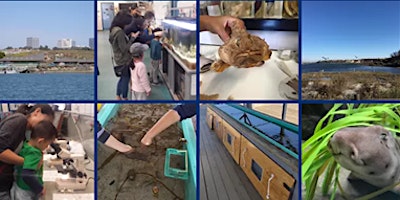
Neon Skimmer
Three quarters of all animal species on the planet are insects, but in spite of their global success it is curious that they have failed to evolve adaptations for living in the sea or other salty environments. The insects associated with Upper Newport Bay live in the surrounding areas rather than the Bay itself. Freshwater areas do support aquatic insects, some (backswimmers, water boatmen) at all stages of their life cycle and others (damselflies, dragonflies, and skimmers) in the larval stages.

Western tussock moth caterpillar
Lepidoptera (butterflies and moths) is perhaps the most interesting of the insect orders (groups) to the general public. Moths are often overlooked, either because they are nocturnal or because they are drab compared to butterflies. But the western tussock moth is difficult to ignore, especially in the larval stage when it sports red and yellow body markings as well as hairy tufts on its back. The adult female is unusual in that she is wingless and therefore unable to fly.

Western tussock moth male
In order to get a mate, she emits a very specific sex attractant, then waits for the male to come to her. The male has huge antennae to help him to detect the invitation.
More on butterflies.








